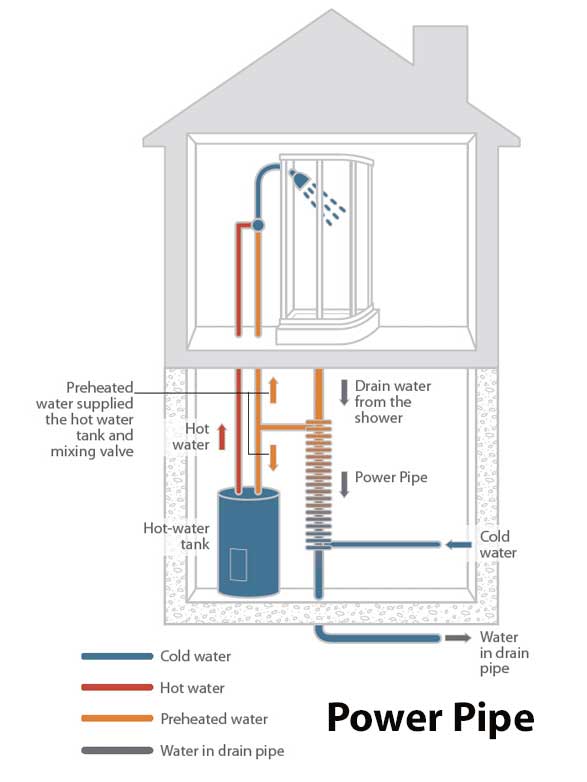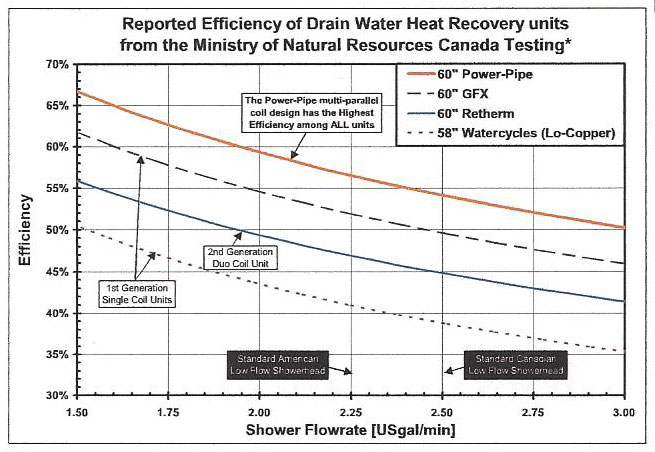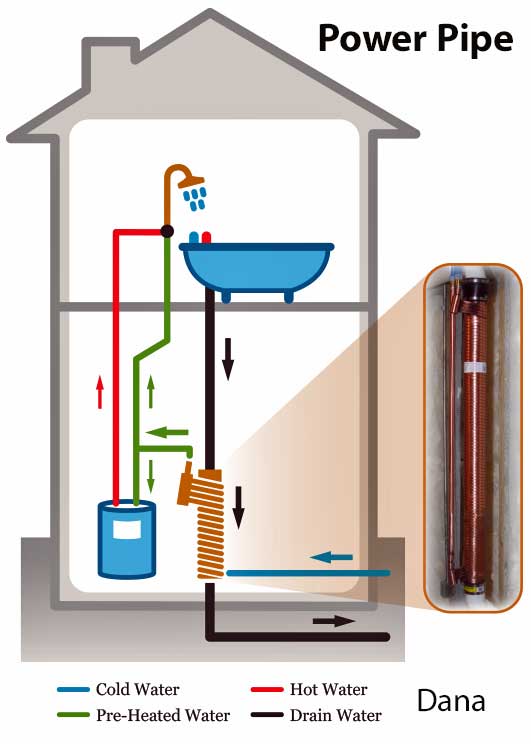Who's Dana Dominic?
This subject is so interesting. I would like to see how the first few installs go in and what people's opinions are. As yet I have only seen the systems online. No job site installs as yet.
My house could be a good "Geniune Pig" I'm thinking.
JW
Beats me!
Even though the original patents for gravity film heat exchangers on drains were from a US inventor/company (and tested by the US D.O.E. back in the early 1980s), the bulk of the development and study since has been in Canada, where the year-round average incoming water temps are generally lower than in most US locations, and thus the benefit higher. Most of the current manufacturers are (no big surprise) Canadian, but it's still a tiny market, with a lot of infighting (backstabbling?) amongst the players with claims and counterclaims over intellectual property, safety agency mis-labeling, etc.
They have qualified for various national/provincial/local subisidy that sometimes
varies by model based on the third-party tested performance to Natural Resources Canada's standard parameters.
Only recently has Ontario allowed them to be counted as part of the whole-house efficiency package for purposes of code compliance:
http://www.greenbuildingadvisor.com.../drain-water-heat-recovery-gets-boost-ontario
Industry-leader Renewability (PowerPipe) has nailed the distribution contract game in Canada, being handled by both Sears and Home Depot. In the US they use
EFI, though IIRC they can also be
ordered off Home Depot's US webstore. Most of the others can only be had in the US via "buy direct" manufacturer's websites.
I haven't bothered instrumenting mine, but it's clearly doing the job, since I've dialed back the output on the boiler to where it couldn't possibly keep up with a sustained shower without the input of the drainwater heat recovery unit. But with the DWHR I can shower all day with all zones calling for heat, never running out of either heat or hot water, and the output of the boiler never exceeds ~60-65,000 BTU/hr. Both the "hand on the pipes" and infra-red thermometer tests show several 10s of degrees of temperature rise through the DWHR, bringing even winter-incoming water up to above room temp, but not exactly "warm-warm", just "tepid-warm", which is about what I'd expect out of a ~50% recovery-efficiency tested unit like a 4 x 48 incher.
Whether it has any "payback" or not depends on your energy price points. For families heating hot water with electricity, propane, or oil it has a fairly high ROI, but for those people who have 50 cents/therm natural gas there's no cash argument for them, only the "apparent capacity" performance that allows multiple showers in rapid succession (or continuous low flow showers), from even the smaller-burner gas-fired tanks.
Even though I can't stand their historical (and apparently present) web-forum presence/style and would thus never buy from them myself, the buy-direct price/performance for ThermoDrain is pretty good compared to their competitor's full-retail buy-direct pricing, or the Home Depot/Sears pricing. Plumbing professionals in Canada can probably get the wholesale pricing from WaterCycles or Renewability through other channels. I'm not sure if EFI can ship direct to Canada without being in violation of their distribution contract, but I suspect that would be the case.





